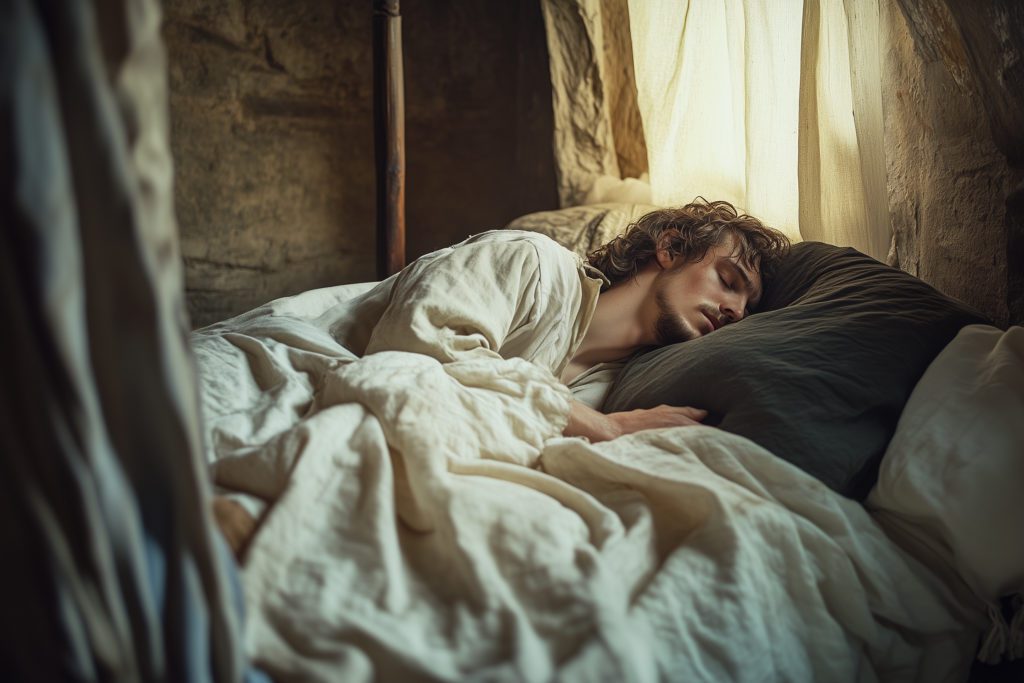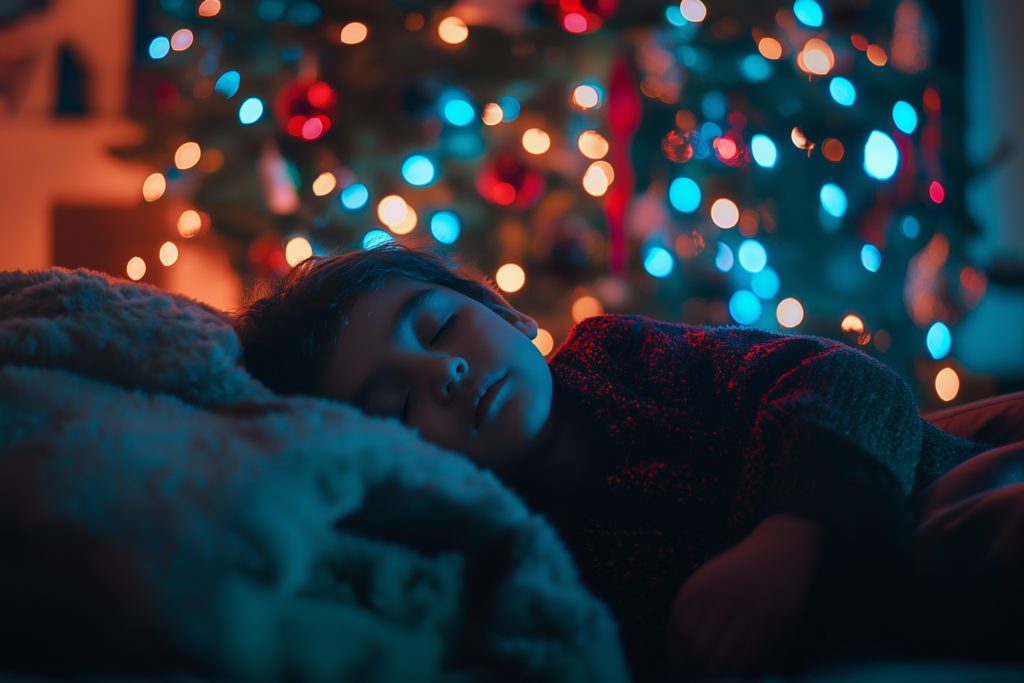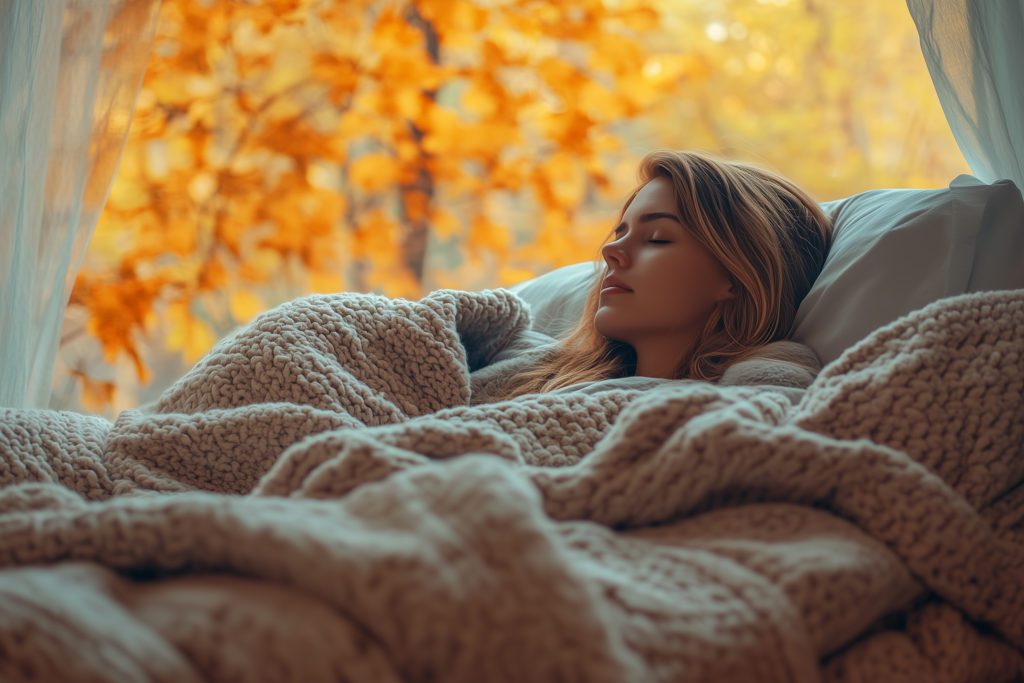
The Evolution of Sleepwear: Historical Trends and Their Influence on Modern Sleep Habits
Pajama styles often reflect the trends of the time . Explore the pajama styles that have influenced today’s fashions and see how they improve sleep.

After a long day, nothing feels quite as wonderful as stripping out of restricting clothes and into the comfort and softness of your pajamas. Sometimes, we even put them on hours before bed just because they instantly relax our body and mind.
Have you ever wondered about how sleepwear has evolved over the years? It’s safe to say that a hundred years ago, people likely weren’t wearing old t-shirts or matching silk pajamas sets to bed, but what did they wear instead?
You may be surprised to learn how much of our current pajama styles come from trends of the past—and have stuck because of their comfort.
The Earliest Pajamas
Centuries ago, people didn’t have as many outfit options as we do today, so they didn’t have clothes that were meant just for sleeping. The goal was still to be comfortable, though, so many people would strip down to just their undergarments, or may have even slept naked just to achieve that coveted comfort.
This was the way of sleeping attire for a long time, but nightwear changed in the 1600s. In one of the earliest references to pajamas, a Frenchman, Jean de Thevenot, mentioned in his travelogue that the Portuguese wore pajamas when going to bed.
The word pajama comes from the Hindu word “pai jama,” which translates to leg clothing. It referred to loose, free-flowing garments that were tied at the waist with a drawstring and dates back to the Ottoman Empire. These pants were acceptable for both men and women to wear in public throughout the Middle East and South Asia.
In the 18th century, these pajamas arrived in Europe and France as an inspiration from Indian fashions, where Muslim men and women wore them as a part of their daily outfits. Merchants nicknamed them the “mogul’s breeches” and called them comfortable fashionwear. Around the 1870s, they became a popular type of loungewear for men, and in the 1900s, they evolved into the sleepwear we’re used to today.
Pajamas for Women
While both men and women wore pai jamas in India, women’s sleepwear has seen significant changes, which often reflected the styles of the times.
Prior to the 1800s, sleepwear wasn’t truly a thing—most people wore undergarments or nothing instead of clothes specifically bought for sleeping. However, in the 1800s, sleepwear started to catch on, although it remained simple, with long, shapeless nightshirts that extended down to the ankles common. Functionality was important here, as the nightgowns were easy to construct and provided some extra warmth at night—they weren’t meant to be beautiful or eye-catching.
By the late 1800s, though, sleepwear saw a change, and what women wore to bed started to reflect the frilly and opulent looks that they wore during the day, if they had the money to afford it. The Victorian era emphasized purity and virtue, so even at night, women were expected to be covered from head to toe, and the Victorian sleeping gown often consisted of a high-collared button-down blouse with a pair of tight-fitting pants.
The roaring 20s brought along the idea that sleepwear could be a fashion-forward garment. Coco Chanel created pajamas with a menswear inspiration that would become synonymous with women’s pajamas, and is still in style today. Nightwear also started to see the use of lightweight fabrics to create relaxed shapes and airy styles.
In the middle of the 20th century, cotton nightgowns started to appear as comfortable and practical alternatives to the flirtatious sleepwear of the prior decades. By the 1970s, the bellbottom pants popular in the day found a partner in wide-legged pajamas, bringing back the original pajama inspiration, even if their prints were brighter than they had been in the past.
Pajamas of Today
When it comes to the pajama styles we see in today’s society, they borrow much from these trends of the past to keep you from tossing and turning in discomfort all night.
Pajama pants that are light, airy, flowing, and made of soft, comfortable material are one of the most common, offering greater warmth without sacrificing comfort. An alternative for these pants is pajama shorts—the same comfortable materials, just with a shorter length.
The men’s style of women’s pajamas are also still popular, with cuts that mimic men’s work attire. To add to the comfort—which is always at the forefront of modern pajama design—these pajamas are made from soft and comfortable fabrics.
Even the long dresses used as pajamas centuries ago serve as inspiration for longer nightgowns, an option for those who don’t want to wear pants.
Furthermore, just like the 1970s, pajamas offer an opportunity to express your interests and fashion taste through unique colors and designs.
While pajamas may have seen trends throughout the years, their number one priority has always been one thing: comfort.
How Pajamas Make or Break Your Sleep
Modern sleep habits emphasize the importance of preparing the body for bed, and one way that you can do this is through your pajamas.
Certain fabrics are preferable for pajamas, as they are lighter and more comfortable—if you’re too hot at night, it may signal to your body that it’s time to wake up, so light fabrics are crucial. Cotton, silk, flannel, fleece, and linen are common pajama fabrics, and everyone has a preference, which can also vary during the season. For instance, in the winter, you may want to wear flannel pajamas to bed because of the added warmth, while linen pajamas might be a better choice in the summer.
The pajama style is also important. Some people may be more comfortable in flowy pants, while others may prefer a nightgown. Either can offer a good night’s sleep, so your choice will entirely depend on what you like an what you feel most comfortable in.
Getting comfortable is one of the most important things we do in preparation for bed, and for a good reason! The more comfortable we are, the more relaxed we will be, the easier it will be to fall asleep, and the less likely we’ll wake up from tight or ill-fitting clothing. Knowing this, what we wear to bed plays a crucial role in how well we sleep, so don’t brush aside the importance of your pajamas.
Pajamas Through The Ages
We’ve come a long way from the days when pajamas were non-existent. Now, we have various styles, fabrics, and colors to choose from, many inspired by the trends of the past.
If there’s one thing that pajamas do, it’s signify to the body that it’s time to get ready for bed. So, the next time you slip on your pajamas, know that you’re sporting a style similar to what your ancestors wore. After all, we all have the same goal—to wear clothing that promotes a better night of sleep, which offers numerous health benefits.
Pajamas are now a standard sleepwear for many people, and that’s something that won’t change anytime soon.

Written by
Jessica G
Medical writer freelancer who has written hundreds of articles on varying topics. Masters of Engineering degree in Biomedical Engineering.
Download Pillow
Get help
Press & News
Legal
Connect
X (Twitter)
Company
Copyright © Neybox Digital Ltd.



